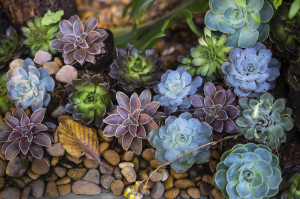 How many times have we all heard somebody say “zero-scape”? Sounds interesting…except it’s “xeriscape”, not “zero” scape—which would mean “no” landscaping.
How many times have we all heard somebody say “zero-scape”? Sounds interesting…except it’s “xeriscape”, not “zero” scape—which would mean “no” landscaping.
Xeriscape, which was coined by Nancy Leavitt in the 1980’s, is a blend of the Greek word “Xeros”, which means dry or arid habitats and the term “landscape”, the visible features of an area of land. Xeriscape literally means dry landscape or dry-scape. The “Xeriscape” landscaping method, originally used in the western regions of the United States, was created particularly for arid and semiarid climates because it uses water-wise designs and drought-tolerant plants, mulch or stone, and minimal supplemental irrigation. That practice has become the typical term for water efficient landscaping using specific plants and ground cover suitable for the climate to create a visually attractive landscape that is at least partially self-maintaining and uses little or no irrigation water. If correctly designed and maintained, a Xeriscape can effortlessly consume less than half the water of a conventional landscape and, once established, Xeriscape should require less maintenance, water, and time.
Achieving Xeriscaping often means replacing turf/lawn with soil, rocks, mulch, and drought-tolerant native plants. Drought-tolerant plants are especially adapted to arid climates and are called xerophytes. Xerophytic plants often have less overall surface area than other plants, reducing the area that is exposed to the air and reducing water loss through evaporation. They may also have smaller leaves or fewer branches than other plants.
Some xerophytes have tiny hairs on their surfaces to provide a wind break and reduce air flow, thus reducing the rate of dehydration and enabling them to maintain a layer humidity around them. Succulents, a variety of xerophyte, have leaves coated with a powdery white wax; that wax and the color of the plants skin helps reflect sunlight and diminish water evaporation. Xerophytes are adapted to conserve water and store their own water during dry periods, and can survive long periods of extreme dryness with their deep spreading roots.
The Xeriscape landscaping philosophy uses as many native, drought-resistant plants as possible and arranges them in efficient, water-saving ways, which also result in saving money and time. Because of those financial and environmental benefits, Xeriscaping has grown in popularity for both commercial and residential properties.








